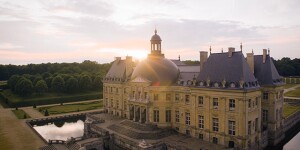S ince purchasing his first painting in 2012, basketball star Amar’e Stoudemire has taken the world of contemporary art by storm. First, while playing for the New York Knicks, he befriended countless artists, along with some gallerists and experts. Later, through an entity called the Melech Collection, he set himself up as an adviser to fellow NBA players with the clear goal of demystifying the art world. And since 2016, in an initiative called In the Paint, the now-retired Stoudemire has been teaming up with the many artists in his network to set up art workshops for underprivileged youth in major US cities.

Amar'e Stoudemire: Most of the images in The Notion of Family are of your mother and grandmother. Besides family, what was your inspiration for the series?
Latoya Ruby Frazier: This body of work takes on classic 1930s black-and-white social documentary photography, specifically the Migrant Mother [by Dorothea Lange]. That image is iconic, but it’s contested because the woman in the portrait, Florence Owens Thompson, never received royalties. Seeing that image pushed me to ask the urgent question: “What would it have looked like had Florence Owens Thompson photographed herself with her children?”
AS: How did you start taking photographs?
LRF: I started innocently. I took Polaroids of everybody from my high school on the school bus that we shared. Then I attended Edinboro University of Pennsylvania and met a professor named Kathe Kowalski. Because my grandmother raised me, I knew to look for someone who was just as strong as a mentor. When I first shot the photographs of my mother, I didn’t think they were important. I didn’t think anyone would care. It was difficult because I was the only African-American student in the class talking about very sensitive, complicated issues that my peers couldn’t relate to. My mentor understood that and pushed me to make this work.
AS: It’s great that you were able to capture that within a lens.
LRF: I taught my mother and my grandmother how to photograph. We did it together.

part of my job is to connect with artists like yourself,” says stoudemire, “to tell their stories.
AS: Is most of your photography based around Pittsburgh?
LRF: Yes. I’ve built up this arc of my work going into Rust Belt communities, finding individuals and families, and collaborating with them to bring visibility to their existence in these post-industrial landscapes. With these small towns, people don’t realise who actually lives there. Most are occupied by people of colour.
AS: That’s the power of photography. You can freeze history within a moment, and you can preserve it – you know? When your children go back and look at these photos, they can know what took place there.
LRF: You’re touching on exactly the thread that pulls my mother, my grandmother and me together. I see us as markers on a time line.
AS: I think it’s important to really be able to tell your story. Part of my job is to connect with artists like yourself, to tell their stories and to put your great work on a large platform so people can see it. It’s hard to inspire the next generation if they don’t see it.

LRF: What are some of the highlights of artworks that you have, some artists that you like to support, or pieces that you want?
AS: Last December with Sotheby’s we did a 40-foot-long wall canvas to kick off the SCOPE Fair in Miami Beach. I asked Cogle, an artist from Brooklyn, to paint the ancient tale of the siege of the temple at Jerusalem, when the Romans invaded and most of the children of Israel went into captivity.
LRF: Do you have a collection that you rotate and show to the public?
AS: No, I don’t show my collection, unless people want to see it. All my stuff is up on the walls of my home.
LRF: Have you influenced other NBA players to collect?
AS: Yeah. They’re a little in slow motion at the moment, because art can be intimidating. But they’re starting to realize and see that “okay, Amar’e is into this.” They are now intrigued to move forward. So, we’ll see how it works.



